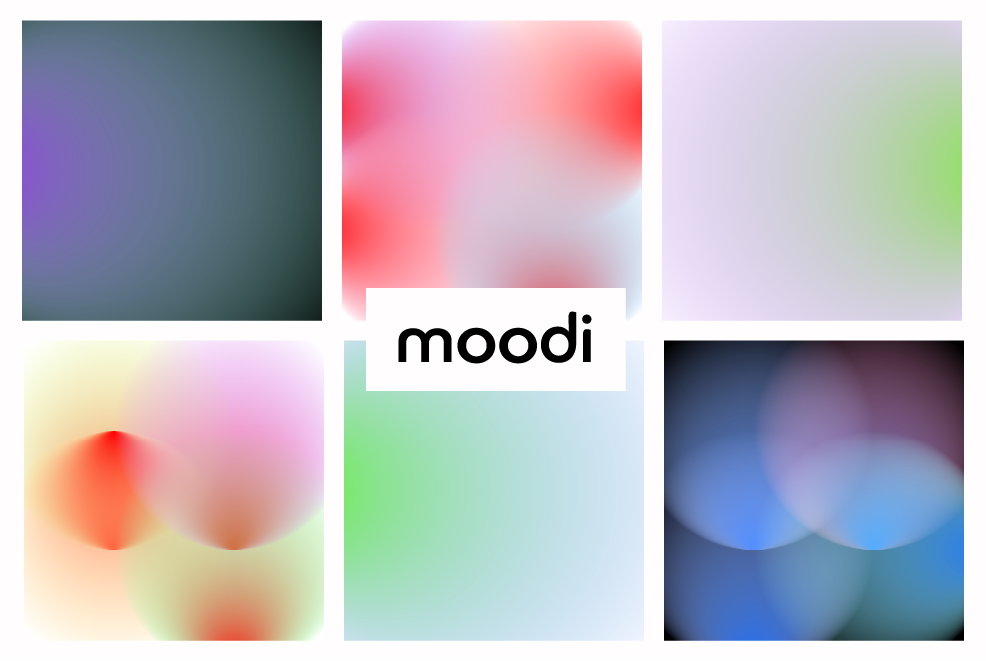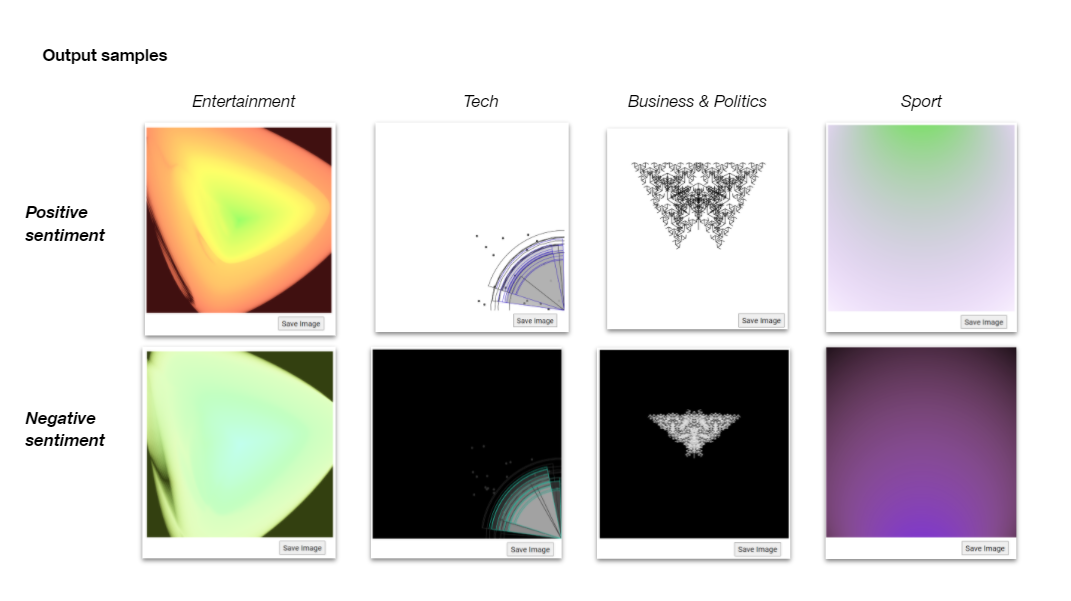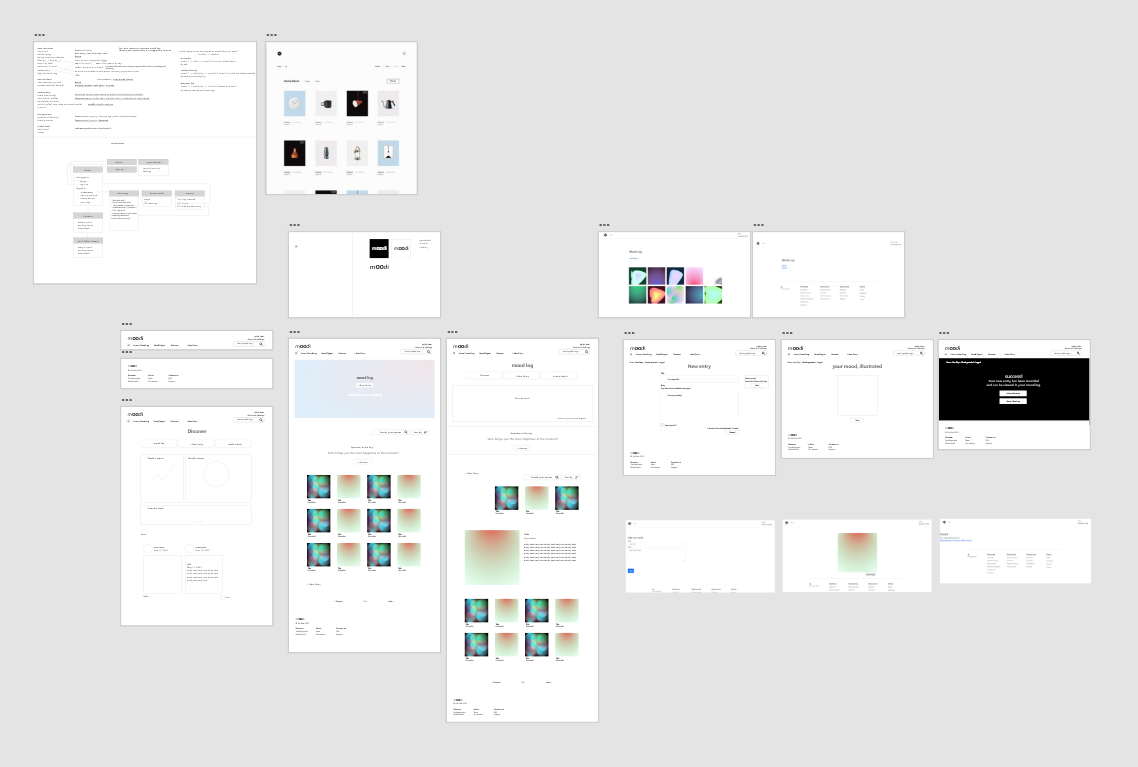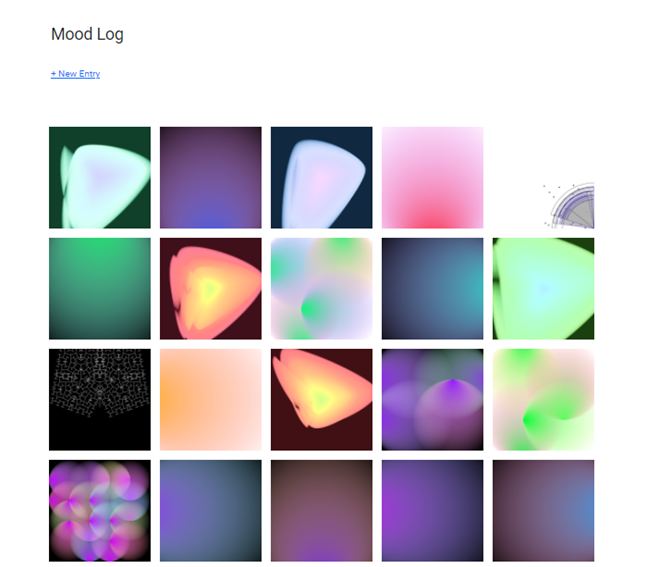
*project under development
— “Do People Who Keep Diaries Secretly Hope Someone Will Read Them?” The Guardian, 28 Jan. 2001
Through natural language processing, moodi analyzes and “tokenizes” your text entry into digital art for you to openly share it with the world.
The generated artworks are abstract representations of your input and are less explicit and revealing — until you are in the mood to dig deep and reread.
Accumulating entries through time offers a unique point of view into your thought journey.


For the first iteration of the web application, a sentiment analysis and a categorization machine learning model are used.

Output samples based on current rule set (much of these artworks' generative code is from opensource projects.)

Wireframes and site architecture (new)

First iteration of mood log without text.

Current look: functions beyond core features are front-end only.